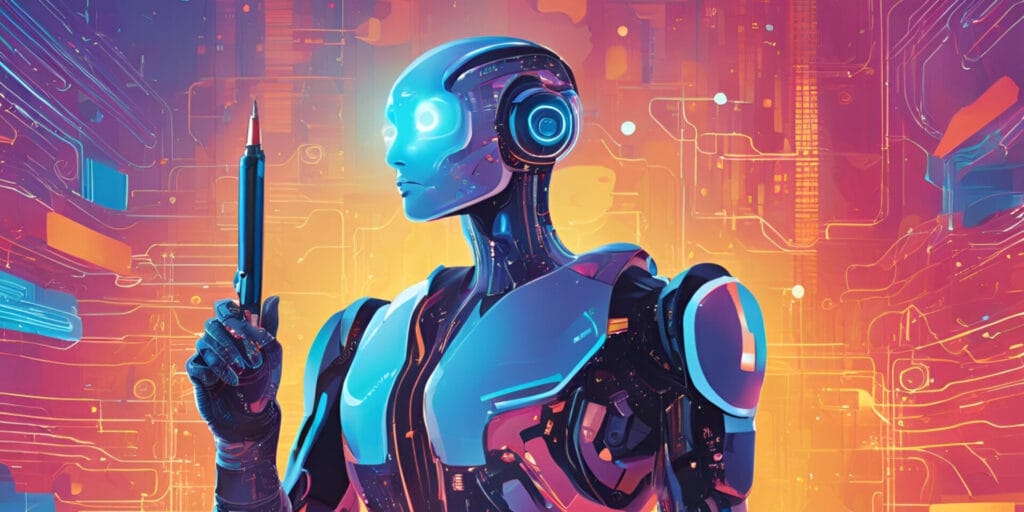In November 2022, when Chat GPT was launched, it recorded 152.7 million visits. It attracted over 1 million global users in just five days. The latest statistics indicate continued user interest, with a stabilised traffic of approximately 1.67 billion global visits by February 2024. Comparatively, Cello, a famous writing equipment manufacturer in the Indian Market, sells 5 million pens daily (150 million pens a month & 1.8 Billion a year). Its competitor, Reynolds, sells 3 Million pens (90 Million pens a month & 1.08 BIllion a year).
Pen is a traditional educational tool, whereas Chat GPT is a modern digital tool that can almost certainly do anything a user wants. Both of their demands are, to a certain extent, interconnected. And this is how:
The effect of Pens on the demand of AI:
Gone are the days when research is the most time-consuming task for a working professional. Gone are the days when working professionals (& students) needed to make hand-written submissions and store the hand-written material. We are officially in the world of AI now, and it has been steadily changing the paradigm of the pen industry.
Generative AI (AI that creates almost anything a human mind can comprehend) makes it obsolete, to a larger extent, to use handwritten material while designing, regulatory filing, writing (fiction/non-fiction, letters), etc. It almost makes a writing aid like a pen (or a stencil) an add-on to the entire experience – something that is preferable to possess but is not really required.
This is even more evident from the perspective of the costs involved. Generative AI decreases the cost of creating a product using a pen to the absolute value of ‘zero’ – both in terms of time taken and money spent in creating it. Pens, regardless of them being a negligible cost in terms of their price, carry a time factor that doesn’t assist modern-day businesses.
Ex: Writing an article using AI v. writing an article using a pen and then uploading it online for readers.
The effect of AI on the demand of Pens:

Generative AI, as extraordinary as it is, has a major flaw that haunts the users, especially those industries where plagiarism and originality play a crucial role.
The lack of applications and software that can precisely identify the work of a human from the work of an AI coupled with the fact that Generative AI and all of the developers of Generative AI are hell-bent on investing in a feature called “Humansie it”, adds layers of complexity to the detection of AI-based material. Because of this, tests/exams/assessments that require online submissions are becoming less and less preferred when assessing a person and providing them with any qualification (education/certificate, etc.).
Essentially, as long as there is an option to “humanise” what was generated by AI and there is no way to detect the work of a human in the sphere of education, it all boils down to hand-written assessments. Which means it all boils down to pens. This means that the demand for pens will only increase in the Education sector.
All of the above analyses are under the presumption that AI is free. If AI is not free and if it requires a price to be paid for accessing its features, this also becomes a factor in the shift in demand of Pens.
Conclusion:
Artificial intelligence and traditional writing tools, like pens, are increasingly intertwined in both professional and educational contexts. A dynamic interplay characterises their relationship, each influencing and challenging the other. Though often unnoticed, this ongoing competition captures our attention due to the relatively minor shifts in how we use these tools. As AI continues to evolve, its integration into various domains pushes traditional methods to adapt, creating a fascinating tension between innovation and tradition. Despite the small changes in demand, the impact of this interplay is profound, reshaping how we think about writing, learning, and communication.

2 Comments
Excellent read, I just passed this onto a colleague who was doing a little research on that. And he just bought me lunch since I found it for him smile So let me rephrase that: Thank you for lunch!
Great V I should certainly pronounce, impressed with your web site. I had no trouble navigating through all the tabs as well as related info ended up being truly simple to do to access. I recently found what I hoped for before you know it at all. Quite unusual. Is likely to appreciate it for those who add forums or something, site theme . a tones way for your customer to communicate. Nice task..